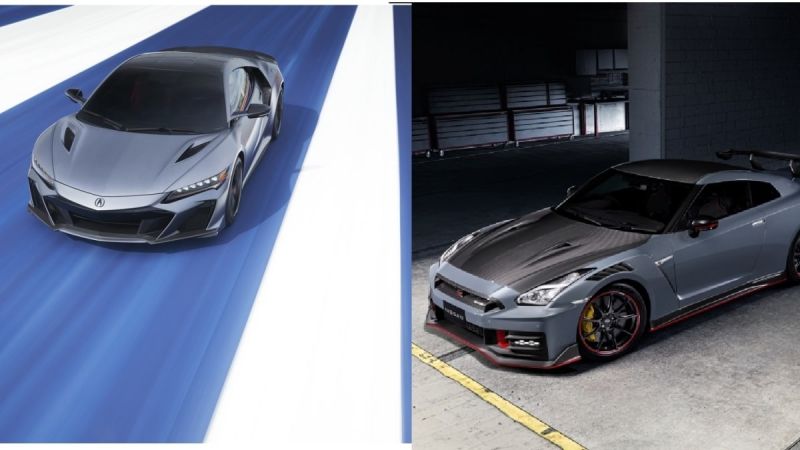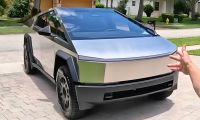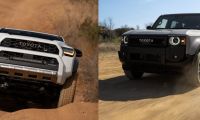One of the most discussed automotive topics of late is the Nissan-Honda merger, with Mitsubishi, supposedly, being the real prize for Honda. In recent talks with The Drive, Nissan North America Vice President, Ponz Pandikuthira, said that the companies are still discussing strategic partnership despite the failed (so far) attempts for a merger.
I see a few ways the Nissan-Honda-Mitsubishi merger could work miracles, and if the words of Nissan's Vice President for North America are anything to go by, we could see a few interesting vehicles, spawned from a partnership between these three Japanese car companies. One of them could be a full-size Honda SUV that could share a body-on-frame architecture with the next-generation Mitsubishi Pajero.
Can a mid-engine Nissan GT-R work?

We already know the next-generation Nissan GT-R will be a hybrid. Many high-performance sports cars made the switch to a hybrid powertrain. This includes the Porsche 911 and its cleverly-engineered T-Hybrid system, which gave us a great example of how a classic sports car can have the advantages of electrification with virtually no drawbacks.
Most of us were sure that the R36 Nissan GT-R will go hybrid, which is also what Honda did with the NSX. While the latter was always a mid-engine model, this will be new for Godzilla's successor. A few decades ago, Nissan attempted a mid-engine Acura NSX rival (twice), but it never reached production. Given Nissan's current situation, it seems more likely that the iconic GT-R switches to a mid-engine setup instead of the next-generation NSX going for a more traditional, FR setup.
“Can we do a next-generation NSX and GT-R off the same platform, make the NSX authentic to what it stands for and make a GT-R authentic to what it stands for? So they are not clones? Can you co-develop two cars like that? I think we can.”, Ponz Pandikuthira said.
If Nissan and Honda go through with this, I am curious to see how different the two cars would be while sharing the same platform. In the interview, Pandikuthira also added, “The authenticity of this matters. An Acura NSX had a very different origin of what that car was. Super lightweight, all aluminum.” He described the Acura NSX as a “super precise, lightweight, aerospace execution, whereas a GT-R is a brute, but a sophisticated brute.” An apt description for both sports cars.
So, no Acura NSX EV?

All this contradicts a previous report from 2024, which stated that Honda is working on an all-electric successor to the NSX. With the way every legacy carmaker is backtracking on its EV strategy, it seems the next-generation NSX will, once again, rely on a hybrid powertrain and not rely solely on electricity for propulsion.
Nissan VP added that talks with Nissan never concluded, and the two companies are constantly looking for ways to partner on various projects. Partnerships have already proved to be an integral part of the modern-day automotive industry, and this is especially important for sports cars, which sadly, occupy a very small niche of the global market.
Going mid-engine will require some sacrifices
The Nissan GT-R has always featured a two-plus-two interior layout. This made it one of the most practical, high-performance sports cars. While there are a (very) few examples of mid-engine sports cars with rear seats, the added electric motors and battery packs will, no doubt, take up valuable space.
That is unless Honda and Nissan come up with a potent, but compact hybrid system, like the Porsche 992.2 Carrera GTS, and the upcoming Porsche 911 Turbo S, which will feature an even more potent variant of the T-Hybrid system, but only on some of its versions.
What are your thoughts on a mid-engine Nissan GT-R hybrid? Is Nissan ruining the iconic model, or will it unlock new levels of performance by making the switch? The mid-engine setup comes with certain inherent advantages, but can Nissan sustain production of a high-end sports car in its current state? Or will this be the final nail in the coffin? Feel free to share your thoughts in the comment section below.
Dimitar Angelov's automotive interests made him an expert in a wide variety of vehicles. Japanese brands like Toyota are closest to his heart, although performance cars in general are his favorite segment, which is why he is constantly on the lookout for the best deals on the market. Dimitar Angelov's car passion and knack for the written word led him to complete a Master of Arts in Media and Communications, and classic car restoration. Dim is happy to get behind the wheel of any car and share his impressions. You can follow Dimitar on X, Linked-in, Instagram, and Facebook.











